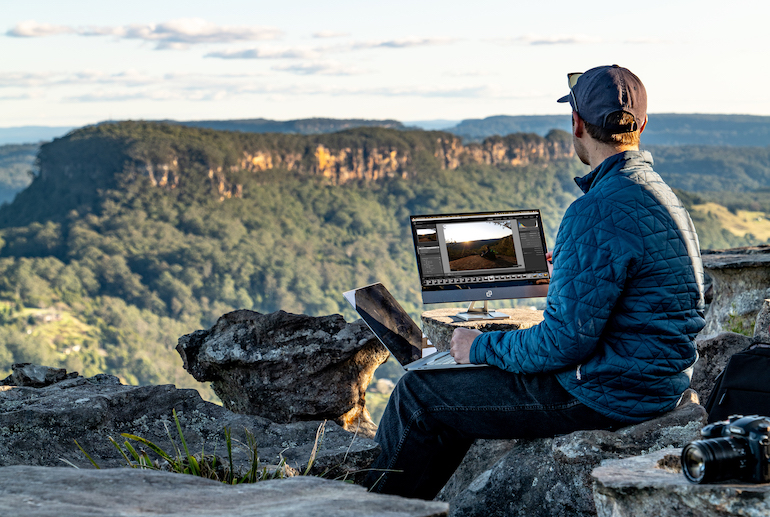The Australian corporate landscape has had a bumpy ride over the past 24 months.
From talent shortages to mass layoffs and hiring freezes, it hasn’t been easy for workers or organisations to plan with certainty for how they work, especially when the macro outlook is anything but certain.
Senior management, IT teams, HR departments have all played their part in fostering corporate culture and supporting flexibility, with varying degrees of success.
Today, most companies are in what seems to be a constant calibration to balance workplace policy, corporate brand and business performance. But where does this leave employee opinions on workplace policies? And do these policies leave employees empowered to be more effective at their jobs?
Flexible work, remote work, hybrid work, work from home, work from anywhere, office work – it can all mean different things to different people.
Many companies have tried to become leaders in providing the best work arrangements, their success has relied on a range of factors that can often be missed or overlooked; team trust, corporate culture, management style, sector trends, and the right tech tools to get the job done.
It’s a minefield to weigh up and a tough place for companies to be competing in – especially when it comes to attracting and retaining talent.
Doing ‘good’ work
What does ‘good’ work from anywhere look like in 2023 from an employee perspective?
With so many work policies being revised, scaled back, or rewritten – particularly in recent months – there are mixed feelings among employees. So it’s more critical than ever for employers to ensure they have policies that match the expectations of the talent they are trying to attract and invest in.
To cut to the chase, weighing up employee freedom, flexibility, productivity, and performance will never be perfect, but with a few key insights gained by listening to what people want, companies can get pretty close.
From anywhere remains
‘Working from anywhere’ is here to stay. Employers need to get used to that fact.
As a local company that develops tech to power people’s ability to achieve more wherever they work, we wanted to find out more, so we went straight to the source. We spoke with more than 1,000 employees from across the corporate sector and asked for their views on working from anywhere and what that means in 2023.
Partnering with Aussie Corporate, one of Australia’s top online employee communities, we opened a relatively frank series of questions to get a read on corporate worker sentiment.
Here’s a breakdown that reveals some of the truths that employers need to be ready for.
- It’s important to have a policy that is clear and based on your target market for talent.
- About 90% of respondents agreed or strongly agreed that work from anywhere policies are important when choosing their next job.
So what? That’s a huge number that cannot be ignored. People want a sense of freedom and control and can only achieve these by feeling like they have options and flexibility. People tell us they want to be trusted and reject workplaces that do not offer that. If workers are capable of working from a range of locations,can be productive, and drive performance, all while sustaining corporate culture, there is minimal sense seen in keeping people at an office desk full time.
- The home of office desk space is only part of the story:
- More than 60% of Aussie corporates work ‘often’ or ‘occasionally’ from a third location. When working away from the office or home office desk, we’re most likely to be at cafes, homes of friends and family, or couches.
- Only 13% stated that they never work anywhere other than a desk at home or their office.
- 40% of respondents felt their employer did not arm them with the best tools to get things done when working from anywhere.
So what? Whether it’s employing digital nomads on contract, employees preparing for a presentation from a local cafe, or someone looking after an unwell child while working from their living room, our ability to work in diverse locations is a defining capability of this generation’s work style.
Policies aside, pretty much everyone is working in between their dedicated home or office workspace. So, without an appropriate setup, there’s a huge productivity deficit risk as a result of not giving people the right equipment to get the job done well.
- If people could choose, would they work from your office? Probably not everyday, but that shouldn’t scare employers.
So what? Sure, the top work from anywhere locations or destinations that Australians would choose range from Bali, Italy, Japan and Regional Australia to mountain cabins and beach houses. But behind the dream locations is a strong sentiment that ‘home is home’ and, aside from taking a few weeks off during the year, most people would actually be happy to return after a work from anywhere stint.
Working from anywhere doesn’t just mean escaping to Bali. It can be at home from the living room, on a short work-cation, or during time with family overseas. Furthermore, with so many international employees in Australia, there was a strong sentiment for policies that could help people reconnect with families overseas for set periods of time throughout the year.
- Productivity is something that employers can enable with the right tools, and by giving employees choice.
So what? Tech is core to productivity. More screen real estate with an additional monitor, a better PC or Mac, or faster internet connectivity were all ranked as the top three tech upgrades that could offer a productivity boost.

Scott McKeon with an espresso display
Productivity is also one of the hardest aspects of a business to measure – whether it’s meeting a KPI, self-ranked by employees, or observations by a manager, it’s probably safest to say that when people feel productive, they probably will be.
There has also been an explosion of productivity apps, studies, insights and knowledge sharing. From our experience, tech is a major enabler of productivity and sets up for success, but we can’t forget the basics of the right ergonomics, decluttering the desktop to give people brain space to focus. These fundamentals remain a key part of why people are more selective with where and how they work. We see the productivity war as being a key battleground for workplaces as we look to 2024 and beyond.
Investing for performance
Invest in people, and they will perform.
From commentary received in the survey and through direct conversations with our own customers at espresso, the overwhelming sentiment among corporate workers is that when businesses invest, truly invest, in their people – with the right policies, the right tools, and the right support – they will perform.
However, this investment also has to happen in conjunction with being responsive to employees and their lifestyles, as well as a fundamentally healthy workspace.
As the saying goes; “what’s the point of investing in staff if they’re not empowered to do the job they’re paid to do?”
- Scott McKeon is cofounder at espresso Displays




















Trending
Daily startup news and insights, delivered to your inbox.